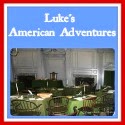Explorers used many tools for navigation. Examples of these are the astrolabe, back staff, and cross staff. The astrolabe was not very accurate; it swayed as the ship did. The back staff was used during the day, as it allowed the user to determine latitude with their back to the sun, and the cross staff was used at night by measuring the changing distance between the North Star and the horizon. They were all later replaced by the sextant, a much more accurate measurement taker. It used a series of mirrors to measure the angle of the sun to the horizon. The compass was used to determine direction. By using a free-pivoting needle, the compass always pointed north. Because of this, a sailor could accurately determine cardinal directions.
In addition to the tools, sailors relied on the constellations, or patterns of stars that made designs or pictures, for directions. There are many that they followed, including, but not limited to, the Hercules, the Pegasus, and the Cygnus. Stars helped them find their way when it was too dark to read a compass.
Just as a compass determined cardinal directions, a sailor could read the stars and determine direction. In the Northern Hemisphere, sailors used the constellation Ursa Major. Commonly called the “Big Dipper,” it could be seen from any location in the hemisphere. At the end of the dipper’s “handle” is the North Star, Polaris. Sailors used the North Star in the same way they used the compass, basing north on the location of the star.
 |
| Image source: NASA |
However, once a ship sailed south of the Equator, the North Star was no longer consistently visible. They needed to use the constellation Sothern Cross, or Crux. It consists of five stars. Unlike Ursa Major, it does not have a pole star. The stars Acrux and Gacrux (Alpha and Gamma) are used. If a sailor traced a line from Gacrux to Acrux, he could find celestial south. A more accurate way to locate south was to use Crux in conjunction with Alpha Centauri and Beta Centauri.
 |
| Image source: NASA |
Using many tools, explorers could always find their way, no matter what time of day. They used the compass and back staff during hours of sunlight, and the constellations and cross staff at night.

U is for Ursa Major!

©2012- 2013 Adventures with Jude. All rights reserved. All text, photographs, artwork, and other content may not be reproduced or transmitted in any form without the written consent of the author. http://adventureswithjude.com


No comments:
Post a Comment